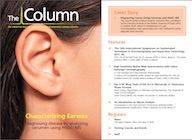Analysis of White Oils Using AgLC×GC
Researchers have developed two new methods for the analysis of MOAHs in highly purified mineral oil fractions (white oils) using comprehensive AgLC×GC, one method uses FID, while the other uses VUV.
Photo Credit: prasongtak/stock.adobe.com

Researchers have developed two new methods for the analysis of mineral oil aromatic hydrocarbons (MOAHs) in highly purified mineral oil fractions (white oils) using comprehensive off-line silver phase liquid chromatography×gas chromatography (AgLC×GC), one method uses flame ionization detection (FID), while the other uses vacuum ultraviolet detection (VUV) (1).
White oils are widely used for moisture control and skin protection across the cosmetics industry, as well as a water loss barrier in food such as fruits and candies. Unfortunately, if the oils are insufficiently purified they can contain excessive levels of residual MOAHs. This is an issue because larger MOAH species containing 3–7 fused aromatic rings are suspected to induce DNA damage making them mutagenic, carcinogenic, and genotoxic (2–5). To address this methods are necessary to evaluate the level of purification in white oils as well as determine the total level of MOAHs in the oils and characterize the MOAH species.
Current methods rely heavily on the separation of mineral oil saturated hydrocarbons (MOSH) prior to quantification, however, partial coelution when attempting to separate using normal-phase LC hampers the method, and further updates to the method have also identified problems related to tailing in the MOSH fraction, a result of dead volume.
To address these issues, researchers developed a comprehensive AgLC×GC method with detection being performed by FID or VUV. The benefit of VUV detection is structural information of the molecules based upon their VUV spectra. This method offered specific advantages including eliminating the need for markers to determine MOSH/MOAH separation cutâpoint, the use of silver-based stationary phases in the first dimension, which gives a group-type separation of the mineral oil according to the degree of aromaticity, and the aforementioned structural data from VUV detection.
References
- A.R. García-Cicourel et al., J. Chroma. A in press (2019). https://doi.org/10.1016/j.chroma.2019.460391
- T.A. Roy, S.W. Johnson, and G.R. Fundam, Appl. Toxicol.476, 466–476 (1988).
- A.J. Ingram, J.C. Phillips, and S. Davies, J. Appl. Toxicol.174, 165–174 (2000).
- M. Granella et al., Mutat. Res. 343, 145–150 (1995).
- M. Granella and E. Clonfero, Int. Arch. Occup. Environ. Health63, 149–153 (1991).

The Next Frontier for Mass Spectrometry: Maximizing Ion Utilization
January 20th 2025In this podcast, Daniel DeBord, CTO of MOBILion Systems, describes a new high resolution mass spectrometry approach that promises to increase speed and sensitivity in omics applications. MOBILion recently introduced the PAMAF mode of operation, which stands for parallel accumulation with mobility aligned fragmentation. It substantially increases the fraction of ions used for mass spectrometry analysis by replacing the functionality of the quadrupole with high resolution ion mobility. Listen to learn more about this exciting new development.
Liquid Chromatography to Analyze Vitamin D Proteins in Psoriasis Patients
January 21st 2025Can a protein involved in delivering Vitamin D to target tissues have an altered serum profile in psoriasis patients with cardiovascular disease? Researchers used liquid chromatography (LC) to help find out.
The Complexity of Oligonucleotide Separations
January 9th 2025Peter Pellegrinelli, Applications Specialist at Advanced Materials Technology (AMT) explains the complexity of oligonucleotide separations due to the unique chemical properties of these molecules. Issues such as varying length, sequence complexity, and hydrophilic-hydrophobic characteristics make efficient separations difficult. Separation scientists are addressing these challenges by modifying mobile phase compositions, using varying ion-pairing reagents, and exploring alternative separation modes like HILIC and ion-exchange chromatography. Due to these complexities, AMT has introduced the HALO® OLIGO column, which offers high-resolution, fast separations through its innovative Fused-Core® technology and high pH stability. Alongside explaining the new column, Peter looks to the future of these separations and what is next to come.
A Guide To Finding the Ideal Syringe and Needle
January 20th 2025Hamilton has produced a series of reference guides to assist science professionals in finding the best-suited products and configurations for their applications. The Syringe and Needle Reference Guide provides detailed information on Hamilton Company’s full portfolio of syringes and needles. Everything from cleaning and preventative maintenance to individual part numbers are available for review. It also includes selection charts to help you choose between syringe terminations like cemented needles and luer tips.